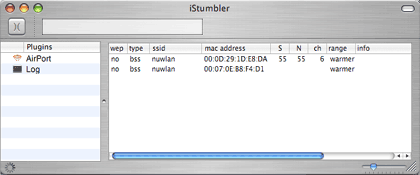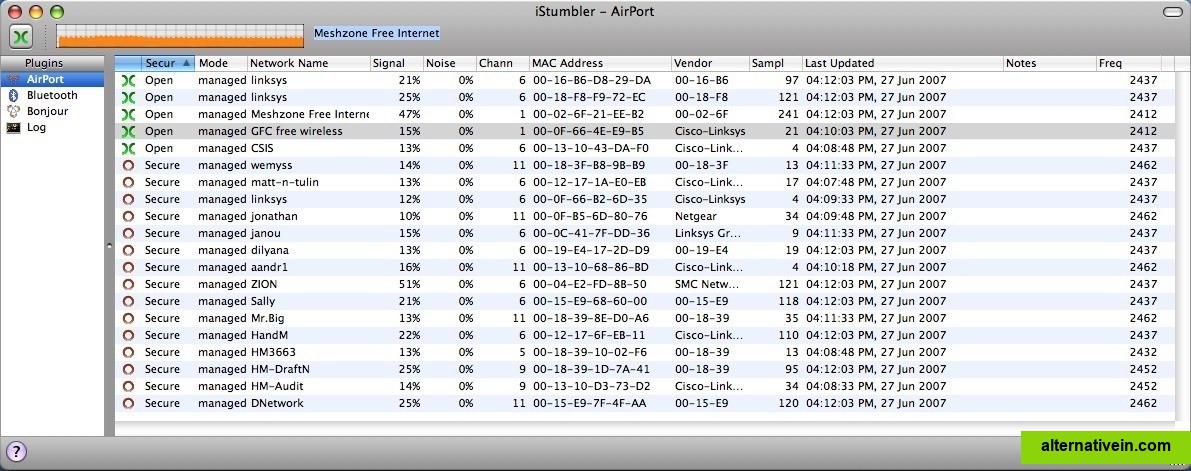

This means nearby structures that reflect radio energy can reduce the effective range even if they're not directly in the line of sight. AirPort is sensitive to "multipath" which means signals bouncing off other objects so they arrive from more than one direction shifted in time. Obstructions may include anything with significant metal content such as steel furniture, plaster walls, or metal framing. Line of sight - Higher elevations clear of obstructions generally improve coverage.Distance - Try to position your access point(s) close to the center of the desired coverage area.You don't have to be a rocket scientist to have basic antenna intuition. While space craft designers pay careful attention to hi-gain antennas, The Antenna Is The ThingĮxperienced radio professionals know the antenna is the most importantĬomponent for improving the range of two way radio systems.
Istumbler 100 mac#
The last transmit rate and base station ID (hardware address) will be shown by default if your Mac is currently associated with the corresponding base station. Simply double-click in the corresponding field to enter any notes. As additional scans are performed, any previous data scrolls down the table.įinally the Notes column allows you to annotate individual entries to document the configuration tested. The plot column shows the relative performance (SNR dB) at a glance. Relocating or re-orienting your existing base station If youĪre considering an external antenna to improve AirPort range,Ī directional antenna with a gain of 3 dB will provide only a modest Improvement in signal strength from 10 times the power. Intuitively, 3 dB corresponds to a just noticeable improvement in This to measure antenna performance, or evaluate whether anĮxternal antenna with a rated gain will provide the signal coverage System gain (or loss) and corresponds to the ratings used forĭirectional antennas and other radio components. "dB" is a logarithmic scale for measuring relative The signal to noise ratio (SNR) in dB (deciBels) for comparing relative Next, the signal strength and noise are displayed along with The type allows you to distinguish between normal infrastructure Access Points (AP), computer-to-computer (adhoc) networks, and networks using Wired Equivalent Privacy (WEP) or Wi-Fi Protected Access (WPA).


Station detected with information about the signals it received.įirst, the signals are identified by the time of the scan, the network name (SSID), the channel (1-14), and type of signal. Interpreting the Resultsĭuring a wireless scan, the AirPort Signal tool creates a table row for each Use "Delete" to remove selected entries from the table. Use the Delay field to specify the delay in seconds between scans. Use the Limit field to specify how many times to scan (0 for unlimited). Use the "Merge Similar Names" field to list a single entry for each network showing the strongest base station detected. Specify a Network Name to scan for stations in a "closed" network or limit the scan to matching stations. Leave the "Network Name" field empty to scan for open networks in range. The AirPort Signal tool is designed to help you measure and compare wireless performance to facilitate adjustment.


 0 kommentar(er)
0 kommentar(er)
